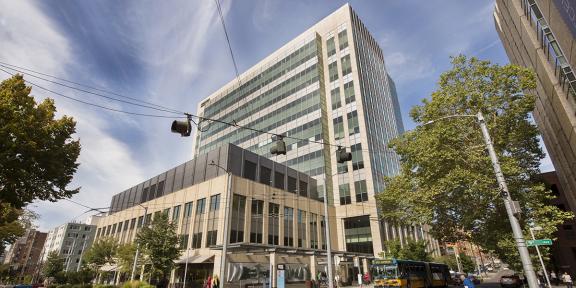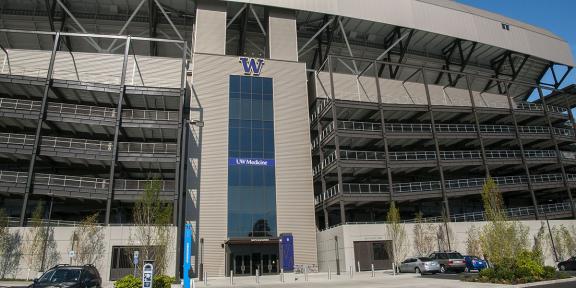Lower back pain
While most lower back pain improves on its own, knowing how to relieve pain and when to talk to a specialist is important.
Lower back pain
While most lower back pain improves on its own, knowing how to relieve pain and when to talk to a specialist is important.

Key points about low back pain (often called lower back pain)
- Common treatments include over-the-counter medication, physical therapy, exercise and lifestyle changes.
- Back rehabilitation programs are a key part of back pain treatment.
- Surgery is used only in select cases.
- It is difficult to prevent all occurrences of back pain, but the effects of back pain can be minimized using the right strategies.
What is low back pain?
Low back pain is a common condition that affects the area above your buttock and below your ribs. Some low back pain occurs with radiculopathy (nerve pain that radiates into the hip or leg region). Sometimes, this radiating nerve pain may be the only symptom of lower back issues.
What are the symptoms of low back pain?
The most common symptom of low back pain is discomfort in the lower back area. Many people experience pain that is:
- Aching
- Burning
- Dull
- Sharp
- Stabbing
Low back pain ranges from mild to severe, and you may feel it in your lower back, buttock, hip or leg. Depending on the severity, pain in your lower back can affect your ability to move around and function normally. Not all symptoms are caused by a specific event or injury but can be the result of repetitive or awkward movements, activities or poor posture.
When should I contact my doctor?
Seek care immediately if you notice the following with your back pain:
- Bowel or bladder incontinence (leakage)
- Signs of an infection, such as a fever
- Weakness or a sudden loss of movement or function in your legs
Call your doctor if your pain:
- Becomes worse or spreads to your legs
- Causes numbness or tingling sensations in one or both legs
- Doesn’t improve with rest, medication and stretching
- Interferes with your daily activities or interferes more than usual
Lower back pain care at UW Medicine
Choosing UW Medicine means having access to a variety of experts who can help you manage back pain, including:
- Primary care doctors
- Physiatrists (also known as physical medicine and rehabilitation doctors)
- Physical therapists
- Spine surgeons
Together, we work to understand the cause of your pain and develop individualized treatment. For both acute and persistent pain, treatment options often include:
- Back rehabilitation programs that include exercise and movement education
- Lifestyle changes, such as improved posture, stress management, optimizing weight and appropriate physical activity
If these treatments don’t work for your condition, your team may evaluate you for additional treatments such as injections or surgery.
Spine specialists who restore your back
Featured doctors specializing in low back pain treatment
Joseph Ihm, MD
Medical Specialties
Appointments
206.520.5000Neelwant S. Sandhu M.D.
Medical Specialties
Sean Matsuwaka, MD, RMSK
Medical Specialties
Appointments
View contact detailsSee all spine doctors
UW Medicine locations specializing in treatment for low back pain
Spine Center at Harborview
Medical Specialty
Hours Today
Appointments
Sports Medicine Center at Husky Stadium
Medical Specialties
Hours Today
Spine Center at Meridian Pavilion
Hours Today
Appointments
What causes low back pain?
Not all symptoms are caused by a specific event or injury, but instead can be the result of repetitive or awkward movements, activities or poor posture. Most causes can be attributed to:
- Conditions affecting muscles, joints, bones, discs and nerves
- Injuries involving overuse, overexertion, falls and other accidents
- Medical conditions such as kidney stones, shingles or infection
- Lifestyle habits such as smoking, excess weight and lack of exercise
How is low back pain diagnosed?
Diagnosing low back pain involves the following:
- Talking to a doctor. They will discuss your symptoms and give you a physical examination. This is one of the most effective ways to begin understanding the cause of your pain.
- Initial back pain treatment. If you don’t have symptoms that indicate other serious health conditions, your doctor may prescribe treatment including physical therapy or at-home exercises. You usually won’t need imaging scans within the first few weeks after your injury.
- If your pain does not improve in the first few weeks, your doctor may recommend seeing a back specialist for imaging tests, typically starting with X-rays. You may also need more advanced imaging scans, such as an MRI, CT or bone scan, depending on your specific situation. It is common to show degenerative changes on your images (these common wear and tear findings start showing up in your 20s). It is important to have a specialist tell you whether they are related to your specific condition.
How is low back pain treated?
Many cases of low back pain improve on their own or with the right medical care. Strategies your doctor may recommend include:
- A short period of rest, but avoiding prolonged bedrest beyond two to three days
- Taking anti-inflammatory medication
- Participating in exercises to improve posture and strength (may be part of a physical therapy prescription)
- Using assistive devices (such as lumbosacral braces) for the short term to allow you to remain active
- Optimizing weight management
- Avoiding smoking and other tobacco products
- Developing a long-term prevention program (as directed by your care team to include back-specific exercises and aerobic activity
What can I do to prevent low back pain?
The best way to prevent low back pain is to think about how you move and to focus on improving your overall physical health. Steps you can take include:
- Whenever possible, think before you lift or pull to ensure you are using correct body mechanics and techniques.
- Maintain correct posture while sitting, standing and sleeping.
- Exercise regularly (with proper stretching beforehand).
- Avoid smoking.
- Maintain a healthy weight.
- Reduce stress, as it may cause muscle tension.
Living with low back pain
While living with low back pain can be an unpleasant experience, it is important to remember that most low back pain gets better over time. During your recovery, setting goals each day and gradually increasing your activity over time will help improve your quality of life. Aerobic activity and finding strategies to manage stress are helpful for overall health and well-being.






